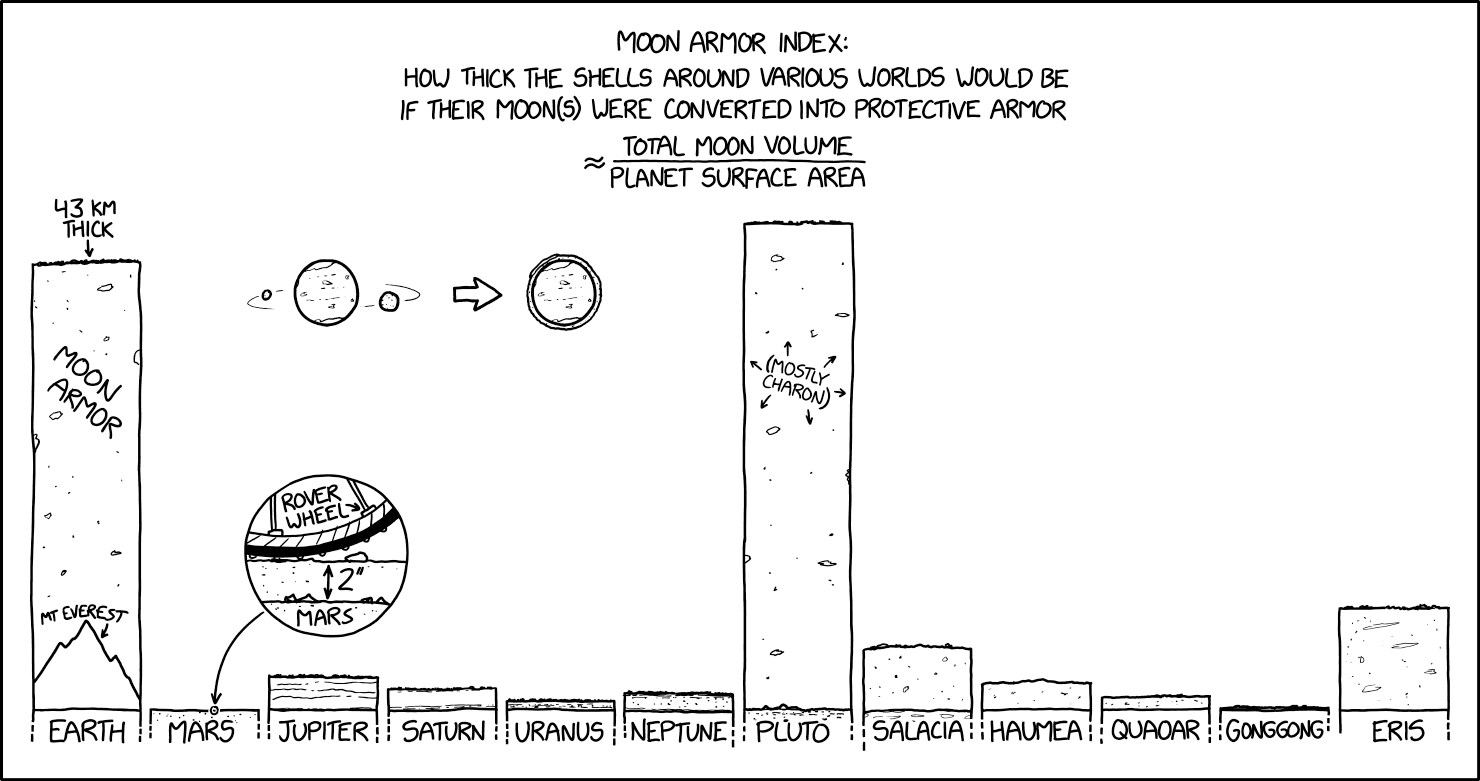March 18, 2024
#2908: Moon Armor Index explain

{{incomplete transcript|Do NOT delete this tag too soon.}}
[Text above diagram:]
Moon armor index:
How thick the shells around various worlds would be if their moon(s) were converted into protective armor
≈Total moon volume/Planet surface area
[Above the diagram, there is a depiction of two moons orbiting a planet, an arrow pointing right, and the same planet with an additional layer around it without orbiting moons.]
[The diagram consists of vertical bars showing “moon armor” thicknesses for the Earth, Mars, Jupiter, Saturn, Uranus, Neptune, Pluto, Salacia, Haumea, Quaoar, Gonggong and Eris. Earth’s bar has a label named “43 km thick” and is compared to the height of a comparatively small Mt Everest, with randomly drawn features indicating a cross section of the additional layer’s rocky material. Most of the other armor thickness bars are not very tall compared to Earth. Some bars, notably Jupiter’s, are embellished with various strata-like lines that possibly correspond to different contributing moons. Most bars show some small dots and patterns. A circular viewport shows the zoomed in detail of the top of Mars’s otherwise not visible bar that reveals a thin layer with the label of 2", and also the bottom of a Mars rover wheel on top of the new surface. Pluto’s bar is slightly taller than Earth’s and has a label “(Mostly Charon)” inside, with arrows pointing into the bar area, which looks similar to that of Earth’s Moon.]